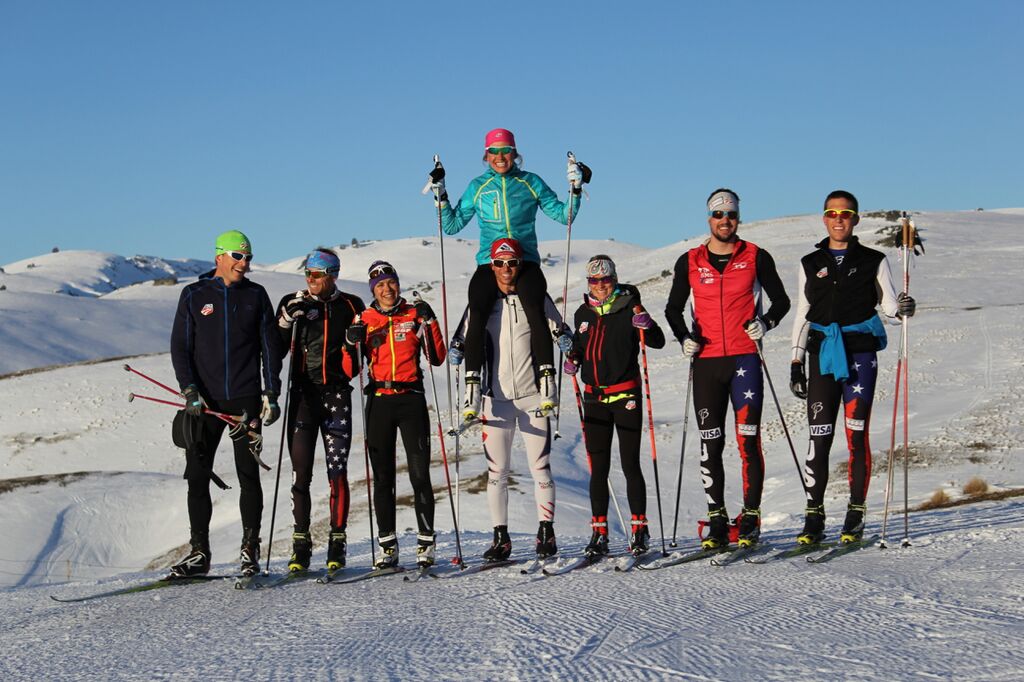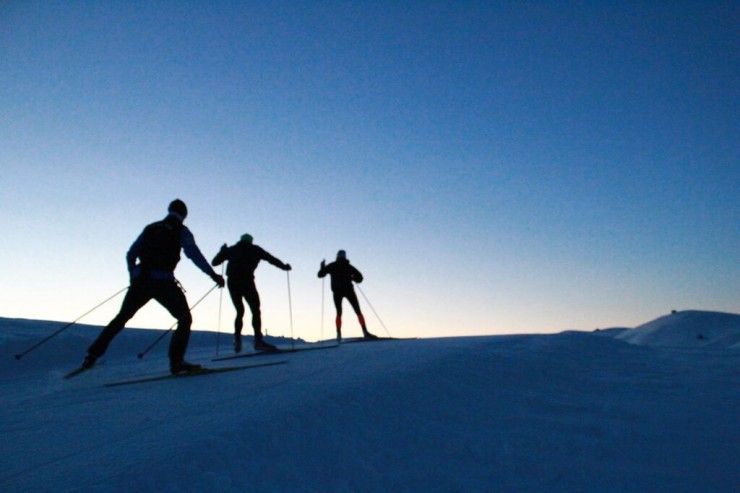
On July 7, the U.S. Ski Team (USST) headed south to the Snow Farm in Wanaka, New Zealand, for its first on-snow camp of the offseason. Usually the team would have logged some spring skiing in May in Bend, Ore., but minimal-snow conditions at Mt. Bachelor led the USST to cancel its annual camp there. Instead, the team relied on its mid-summer trip to the Southern Hemisphere to make up for the lost time on snow.
“One reason we felt it was important to go to New Zealand this year was that we weren’t able to have our traditional camp at Mt. Bachelor,” USST Head Coach Chris Grover said on the phone. “We wanted to have a longer on-snow camp than we have had the last few years in the middle of the summer to try and make up some of those missed days on snow.”
Nine USST athletes and three coaches from the lower 48 reported to camp — with A-team members Andy Newell, Simi Hamilton, Liz Stephen, Jessie Diggins, Sophie Caldwell, and Ida Sargent, B-team member Noah Hoffman, D-teamers Paddy Caldwell and Ben Saxton, as well as women’s coach Matt Whitcomb, assistant coach Jason Cork, and Grover. French World Cup skier Anouk Faivre Picon also joined the group.
Of the 16 skiers nominated to the USST this spring, most of those who didn’t make the New Zealand trip trained with the Alaska Pacific University (APU) Elite Team in Anchorage. Instead, they had three shorter on-snow camps planned for Eagle Glacier, where the USST held a camp last summer and where several of the USST women have returned every year since 2011 for the North American Women’s Training Alliance.

For the athletes in Alaska, it is easy to take advantage of Eagle Glacier’s location. But for everyone else, a longer trip to New Zealand made more sense this year, Grover explained.
“Alaska is awesome, but Eagle Glacier really lends itself to about six days of skiing up there and then its time to come down and take a rest with the way that everything is set up, the way the living situation and everything works,” he said. “[The APU skiers] have their plan that they get from [their coach] Erik Flora. … They are getting on Eagle Glacier three times: once in each summer month, June, July, and August. I understand it, I mean, when you have skiing out your back door, it makes it a little bit hard to make the move all the way down to the Southern Hemisphere.”
But for the rest of the USST, the 15-day camp at the Snow Farm was ideal, with easily accessible ski trails along a ridge and an accommodating staff willing to groom specifically for them.
“It’s a fantastic place for just focusing on training as much as you want and eating and sleeping and recovering in between,” Grover said. “Typical days were breakfast, ski for two and a half, three hours until lunch, [then] lunch, a little bit of recovery time, and then an afternoon workout — that was usually skiing — and then dinner and some technique review and that sort of thing from the day, maybe some PT [physical therapy]-type work in the evening if necessary and then to bed.”
With so much ski time paired with effective recovery, the athletes accomplished one big goal of the camp: ticking off a lot of kilometers in on snow. Another group goal was to refine technique to make for the kind of technical training it would have normally done at Mt. Bachelor in May.

“One thing that we spent a lot of time on down there was herringbone technique because it’s not something you can train dryland training on rollerskis,” Grover said. “For the most part, it needs to be trained on snow. The athletes also worked on technique fundamentals, doing a lot classic and skate skiing without poles.”
While hours on snow and technique remained the main focus, the group also incorporated strength and intensity into its camp.
“Every third day would be some sort of intensity in the morning and then half the group would go down to Wanaka to either run, or to lift, or to do both whereas the other half of the group might stay up and use the small gym and ski and lift up top,” Grover explained. “As a whole, everyone is kind of making good gains, some really good gains in strength happening right now.”
The group also made sure to have some fun. One off day, everyone went to Queenstown and went go-carting. They also did a couple photo shoots with new USST clothing sponsor L.L. Bean. Grover said the team had fun with the usual ski camp stuff and “did a great job of supporting each other and taking care of each other.”
The team was able to trek to New Zealand because of an increased budget from the United States Ski and Snowboard Association (USSA) and some fundraising from the team itself. Last year, the team had to forgo a camp there because of a lack of funds.
“Luckily, this year we were able to really not even take the budget as much into consideration as we had in the previous year, but to do what we felt was the best program for the team,” Grover noted.

Now back in the U.S., team members are spending time with their local clubs, continuing their summer training before their next USST camp in Norway. Kikkan Randall, Diggins, Caldwell, Stephen, Newell, Hamilton, and Hoffman depart for Norway on Aug. 9, where the main focus will be on competing in the Toppidrettsveka, a three-day rollerski competition in Aure, Knyken, and Trondheim from Aug. 20-22, which several national teams attend.
The trip is for the more experienced World Cup athletes who are looking to gauge themselves against the world’s best. “For some athletes, that just didn’t really fit in to what they felt like they needed to be doing in August whereas others felt like they really did need to have a measuring stick to see where they were against the competition,” Grover said.
Reflecting on New Zealand, Grover was positive: “It was a really good camp. We feel like we really accomplished what we set out to accomplish with it,” he said. “I think that athletes, everybody is coming back tired, knowing that they put in about as many kilometers in good snow conditions as they could really hope for.”



